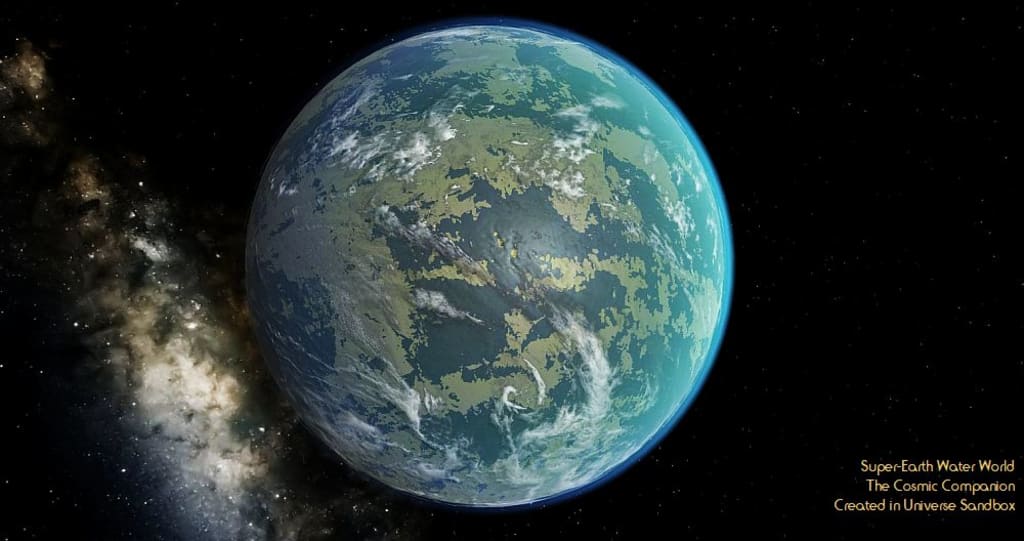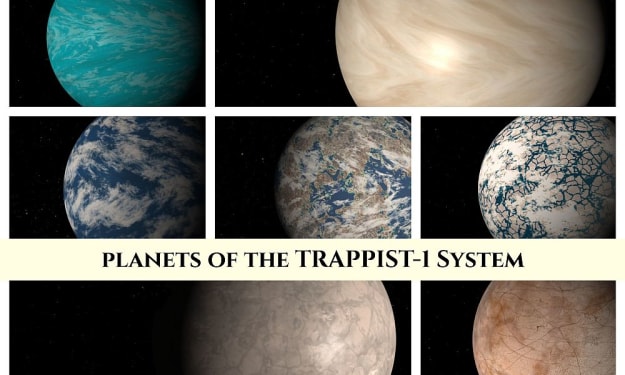Do Water Worlds Fill the Milky Way?
Water worlds might fill our galaxy, a new study examining the formation of the inner planets of our own solar system reveals. What does this mean for life?

Astronomers currently know of more than 4,400 exoplanets orbiting alien suns. Many of these may be water worlds, according to a new study examining how Earth and the rocky planets of our solar system first took shape.
Roughly 4.5 billion years ago, the rocky planets of the Solar System could have coalesced from millimeter-sized (1/25") pebbles of ice carbon-rich stones, this new study suggests. This could deliver far more water, more quickly, to planets than could be delivered by comets impacting on their surface.
If this idea is confirmed, it would provide a plausible explanation of how Earth (and Mars) were formed with large oceans of water so soon after their formation. It would also suggest that water worlds may be common throughout the galaxy, potentially increasing chances for extraterrestrial life to develop on these watery worlds.
"All our data suggest that water was part of Earth's building blocks, right from the beginning. And because the water molecule is frequently occurring, there is a reasonable probability that it applies to all planets in the Milky Way. The decisive point for whether liquid water is present is the distance of the planet from its star," Professor Anders Johansen from the University of Copenhagen explains.
Ice, Ice Baby…

Computer simulations modeled the formation of Earth in the nascent solar system. The simulations revealed that when our planet - together with Mercury, Venus, and Mars, started to form from tiny pebbles of rock and ice.
"The masses and orbits of Venus, Earth, Theia (which later collided with Earth to form the Moon), and Mars are all consistent with pebble accretion onto protoplanets that formed around Mars' orbit and migrated to their final positions while growing," researchers describe in Science Advances.
This process would have taken around five million years to complete, the simulations determined. During this period, surface temperatures on Earth rose, evaporating much of the water in these ice pebbles before they reached the surface. This resulted in our current world, which contains just 0.1 percent water, although this material covers 70 percent of the Earth.
Water, Water Everywhere?
"We are tied to the ocean. And when we go back to the sea, whether it is to sail or to watch - we are going back from whence we came." - John F. Kennedy
Exoplanets strewn through the Milky Way are composed of the same materials of our eight familiar worlds. They also likely formed through a similar process to our own Solar System. This would suggest that water worlds may be common throughout the galaxy.
Water worlds may be common throughout the galaxy, perhaps including the TRAPPIST-1 system, one of the most intriguing families of planets yet found. Video credit: The Cosmic Companion
“With our model, all planets get the same amount of water, and this suggests that other planets may have not just the same amount of water and oceans, but also the same amount of continents as here on Earth. It provides good opportunities for the emergence of life,” Professor Martin Bizzarro, co-author on the study, explains.
If water mostly arrived on planets through the haphazard arrival or comets, many worlds would be bone dry, making life unlikely, or covered in water. These worlds might form marine life quite readily, but such conditions would make the exploration of space by such lifeforms less likely.
The next generation of space telescopes, including the James Webb Space Telescope, will study exoplanets searching for signs of water — and perhaps, the first tantalizing signs of extraterrestrial life.
---
James Maynard is the founder and publisher of The Cosmic Companion. He is a New England native turned desert rat in Tucson, where he lives with his lovely wife, Nicole, and Max the Cat.
Did you like this article? Join us on The Cosmic Companion Network for our podcast, weekly video series, informative newsletter, news briefings on Amazon Alexa and more!
About the Creator
The Cosmic Companion
The Cosmic Companion has been delivering high-quality, factual scientific news and features since 2018. We also offer a weekly show, Astronomy News with The Cosmic Companion, featuring interviews with scientists around the globe.






Comments
There are no comments for this story
Be the first to respond and start the conversation.